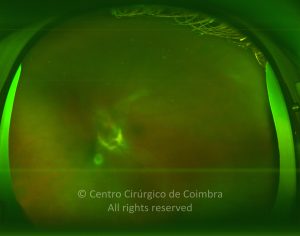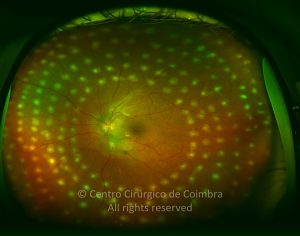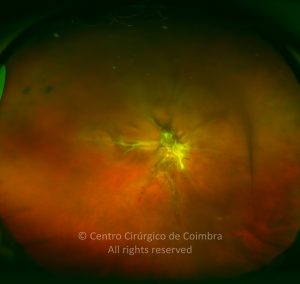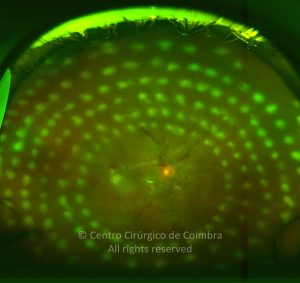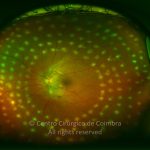Uveitis is an intraocular inflammation and may be classified anatomically into anterior, intermediate, posterior and panuveitic forms.
The symptoms include eye pain, redness of the eye, blurred vision, floating spots, and photophobia.
Uveitis is associated with several disorders: ankylosing spondylitis, juvenile rheumatoid arthritis, multiple sclerosis, sarcoidosis, systemic lupus erythematosus, Vogt-Koyanagi-Harada syndrome, HLA-B27, arthritis and other autoimmune diseases. It also appears as an immune response to infections inside the eye.
The presentation in the eye, in some cases, is characteristic of some syndromes such as serpiginous choroiditis, multifocal choroiditis, punctate inner choroidopathy, birdshot retinochoroidopathy, acute posterior multifocal placoid pigment epitheliopathy, and multiple evanescent white dot syndrome. Several masquerade syndromes that clinically present anterior and posterior uveitis includes retinal detachment, intraocular foreign body, leukemia, malignant melanoma, and lymphoma.
Early diagnosis and treatment of uveitis is important to prevent permanent loss of vision. Uveitis is typically treated with corticosteroids and/or immunomodulators.





